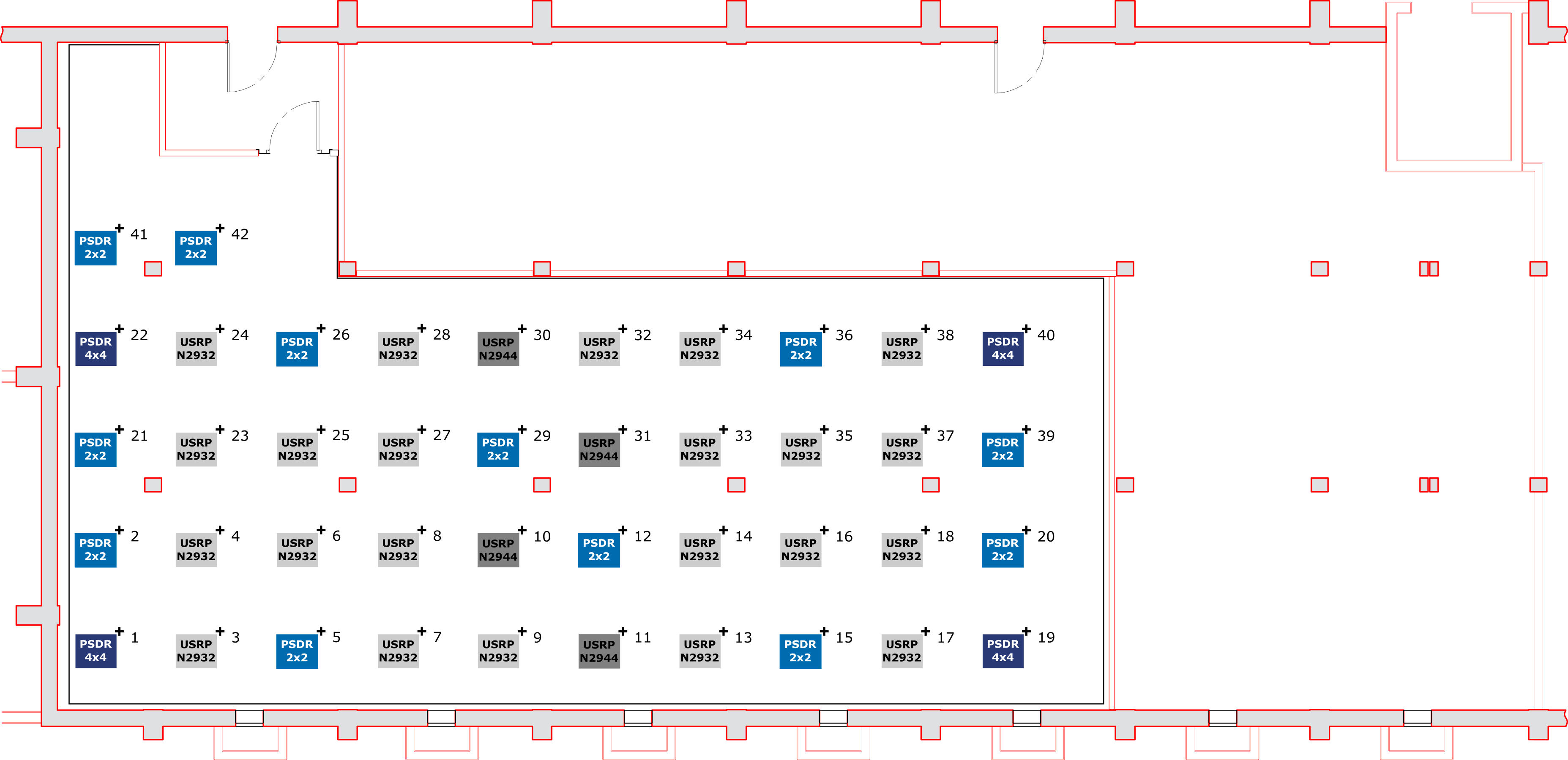doc
**This is an old revision of the document!**
Table of Contents
Documentation & How-to
Here you will find documentation and how-to about the environment used by CorteXlab and provided to users.
CorteXlab
Experimental workflow
The process of running experiments on the FIT/CorteXlab testbed involves several steps:
- Developing an experiment
Node position map
Minus
GNURadio
- Building a toolchain How to install the toolchain (including GNURadio) used within CorteXlab on your computer in order to have the same development environment
- Embedding OOT modules or custom libraries/binaries in a minus scenario How to have a self-explanatory link
- FFT Web Documentation about FFT Web GNURadio block
USRPs
There 26 USRPs installed in the FIT/CorteXlab room.
- 22 are of type NI-2932 (equivalent USRP N210 with a SBX daughterboard). Here are the main characteristics of these (for more details refer to the USRP-2932 specifications page at NI):
- Frequency range: 400 MHz to 4.4 GHz
- One Gigabit/s ethernet attachment to control node
- Maximum bandwidth: 20 MHz (but in practice less than 20 MHz are usable without loss of samples due to either the gigabit ethernet connectivity or the computing power of the signal processing computer)
- Full-duplex TX and RX chains. There are antennas connected to the
TX/RXandRX2ports of all USRPs. In the case theTX/RXports are used, then only half-duplex is supported - Synchronization: All USRPs are connected to a stack of octoclocks (see below for more info) and can be configured to work in synchronized mode by selecting
external clock sourcein the USRP sink or source configuration.
- 4 are of type N2944R (equivalent of X310). Here are the main characteristics of these (for more details refer to the USRP-2944 specifications page at NI):
- Frequency range: 10 MHz to 6 GHz
- Dual 10 Gigabit/s ethernet attachment to control node
- Maximum bandwidth: 160 MHz (theorically, the dual 10 Gigabit/s ethernet attachment should be sufficient to transfer this whole bandwidth, but in practice in most cases the computing power of the signal processing computer will limit that)
- Synchronization: All USRPs are connected to a stack of octoclocks (see below for more info) and can be configured to work in synchronized mode by selecting
external clock sourcein the USRP sink or source configuration.
Find here tutorials on how to use them
Octoclocks
PicoSDRs
doc.1633682765.txt.gz · Last modified: 2021/10/08 10:46 by mimbert

